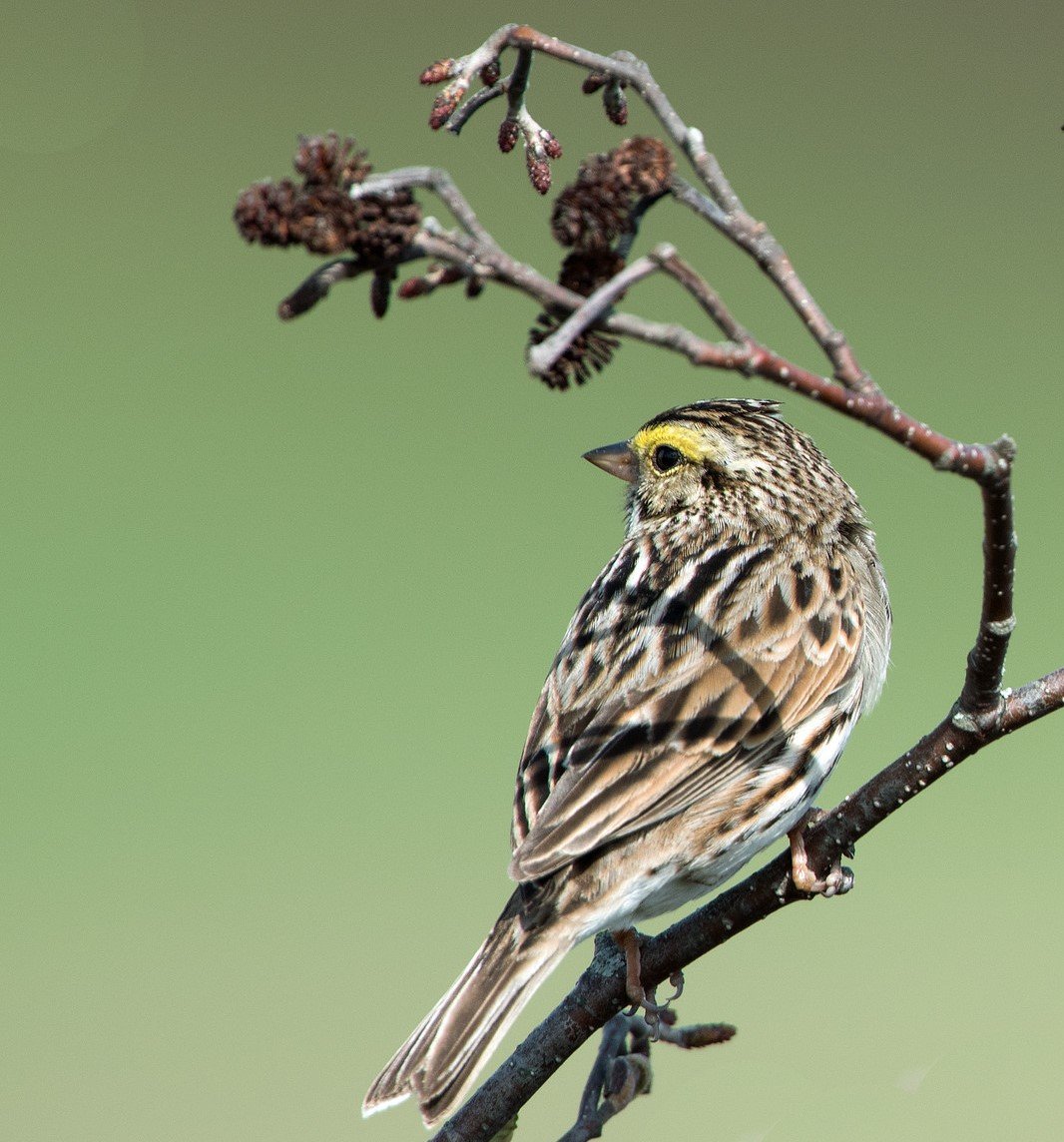I glimpsed my first white-throated sparrow of the year here Sunday. I haven’t heard one sing, nor have I been able to get a decent photograph of one yet, so the illustrations used below are from prior sightings.
White-throats (Zonotricia albicollis) have a characteristic that has been the focus of much study: They come in one of two color variations called “morphs” or, technically, “plumage polymorphism.” These morphs are genetically determined and play a unique part in the birds’ behavior.
One form, shown first below, is the “white-striped” morph (also known as “white-crowned” or “bright” morph). These white-striped sparrows, whether male or female, have been found to be more aggressive than birds displaying the other (tan) morphism, among other differences.
That other form of white-throated sparrow is the “tan-striped” morph (also known as the “tan-crowned” or “drab” morph), shown here:
These tan-striped sparrows, whether male or female, have been found to be more nurturing than birds displaying the white morphism, among other differences.
This dual morphism is passed on in the species because – and here it gets strange – the individual birds virtually always (95%+) mate with a bird of the opposite stripe and produce young of both morphs. Why this “dissassortive” mating? Apparently, it evolved to preserve the morphism that corrects for a genetic weakness. Mating of birds of the same stripe has been found to be significantly less successful in the production and/or raising of young than mating of the opposite. (Images taken in Brooklin, Maine.)

